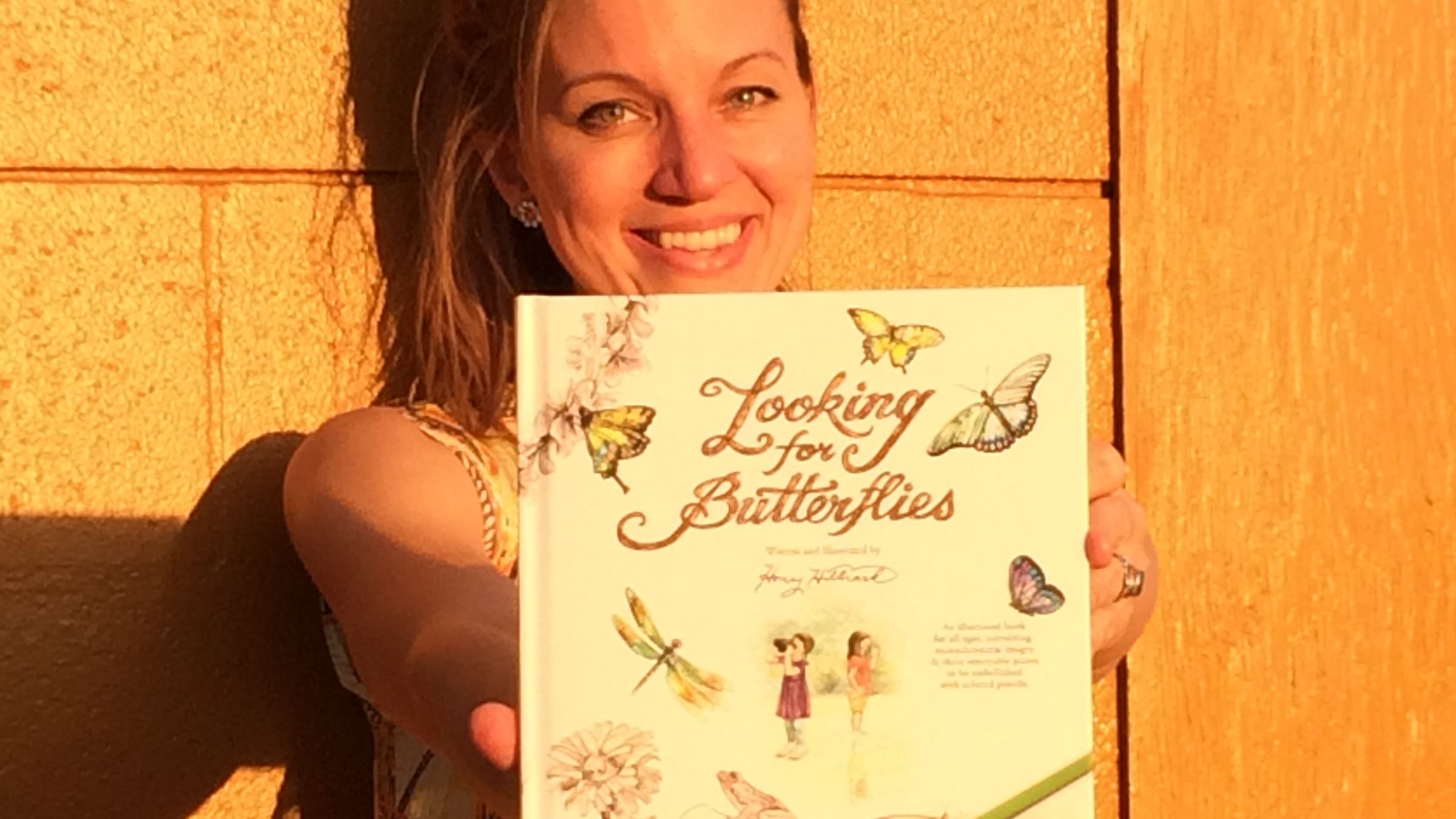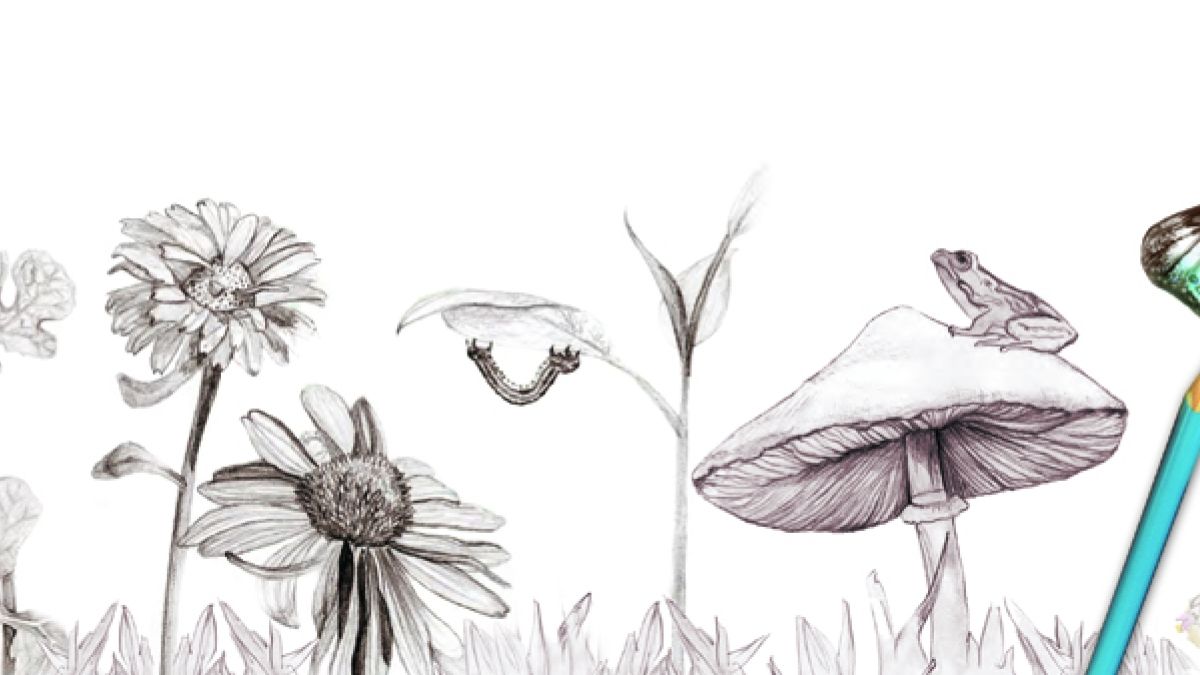
Honey Hilliard is the author and illustrator of the book, Looking for Butterflies, a color-along poetic narrative celebrating nature, art, and perseverance. The book's watercolor and pencil images of cocoons, lady bugs, dragonflies, and butterflies are presented in color and monochromatic so that the reader can color along in creative collaboration. Her career began as Florida’s bird artist, and her paintings can be seen on the bird posters in all Florida state parks and wildlife refuges. Hilliard continues to have a strong affinity for birds, which is evident in her fine art portfolio.
Hilliard laments that children are spending less and less time enjoying both art and nature, and as a result, she says, "Many of us experience, at an early age, a real disconnect from our natural world, and our own power to create."
We certainly don't start out that way. "Have you ever noticed that pretty much every child, when handed a paint brush, demonstrates immediate joy and confidence?" she asks. "And have you ever seen adults offered art materials? I see most adults get a frozen look of fear on their faces when invited to paint; they stammer things like 'Oh, no, I don’t know how,' or 'I can’t even draw a stick figure!'"
Hilliard also remembers with fondness her time in nature as a child, which, like many people, she became less and less connected to as she grew older. "A level of disconnect began at some point in my childhood, and continued, until I found myself in my late twenties reading books about 'finding yourself,' wondering where I’d gotten lost and how to get back," she remembers. "I wanted to go back to a time when I talked to animals and they talked back, to being in my backyard picking flowers. I wanted to go back to the times when I rode my bike for hours at a time, to the next town, even. I would stroll around my neighborhood, collecting critters in my various 'critter cages.' I would keep frogs, turtles, grasshoppers, praying mantis, spiders, or caterpillars just for a day or two, create little habitats, or just sketch them and then let them go."
She was lucky enough to get back to a feeling of connectedness, and it shows in her art. Hilliard calls on us to find our inner artists by getting outside. "If I may deliver a message it is this: Go make something, and get outside! Indulge your mysterious and fun power to create, and spend some time in nature, get your bare feet on the ground, you’ll be glad you did! Do this on a regular basis and you will feel healthier, connected, powerful, and confident!"

Looking for Butterflies
You can contact Honey Hilliard at [email protected].